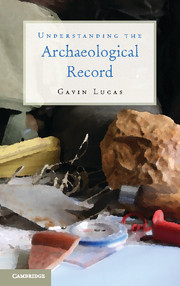4 - Materialized Culture
Published online by Cambridge University Press: 05 June 2012
Summary
The concept of material culture is a nineteenth-century invention, one bound up with the broad development of anthropology and archaeology but also implicated in the emergence of mass production and mass consumption in nineteenth-century society (Buchli 2002). In 1851, London staged one of the most spectacular shows ever seen: the Great Exhibition. It was one of the first of several such events staged in the Western world intended to celebrate the marvels of modern technology and design, and although its full title was the Great Exhibition of the Works of Industry of All Nations, it was clearly an act of self-promotion on the part of Britain and its position in the global political economy. It can, however, equally be considered a manifestation of the degree of material entanglement affecting an industrialized nation like Great Britain in the mid-nineteenth century. Seven years later, a rather different event hit London. During an unusually hot summer in 1858, the River Thames, which was overflowing with sewage, started to smell – and smell really badly. So badly, in fact, that it became known as the Great Stink. It was the last straw in a cumulating set of problems for the city and resulted in the construction of new sewage and waste disposal systems for the capital. I think it is an irony that in the same decade that London celebrated its global power through an exhibition attesting to its wealth of material goods, it also suffered from the very excesses created by such wealth. The scale of waste – of rubbish – is inseparable from that of material entanglement.
Perhaps, then, it is no coincidence that the 1850s is often seen as the decade marking the birth of archaeology in England, that a nation so obsessed by its own materiality takes a systematic interest in the materiality of its past. But the symmetry goes further, for what made the new discipline of archaeology distinct was that it was precisely interested in all aspects of past materialities, and it especially made a point about collecting everyday and mundane artifacts as well as what might be considered pieces of more art-historical interest (see Chapter 2). Fundamentally, it was as interested in rubbish as it was in special deposits like burials. One might, then, suggest that what characterized – partially at least – the birth of scientific archaeology was (middle-class) imagination and fascination with superfluous matter, whether manifested by repulsion in the context of urban waste or attraction in the context of urban museums. The archaeological object and city rubbish share this in common – they are both matter which exists outside of contemporary society in the sense of being unintegrated and unconstituted. The difference is that they are moving in different directions; rubbish is matter that was once constituted and has become deconstituted, whereas the archaeological object is matter that was deconstituted but has become constituted. The constituting act is – predictably – modelled on that which modern industrial society performs in the production of its goods. It is no coincidence that when B. E. Hildebrand was organizing an exhibition in the Museum of National Antiquities of Stockholm in 1866, he employed an aesthetics directly copied from an exhibition of modern mass-produced items of the same year (Almgren 1995: 27).
- Type
- Chapter
- Information
- Understanding the Archaeological Record , pp. 124 - 168Publisher: Cambridge University PressPrint publication year: 2012



